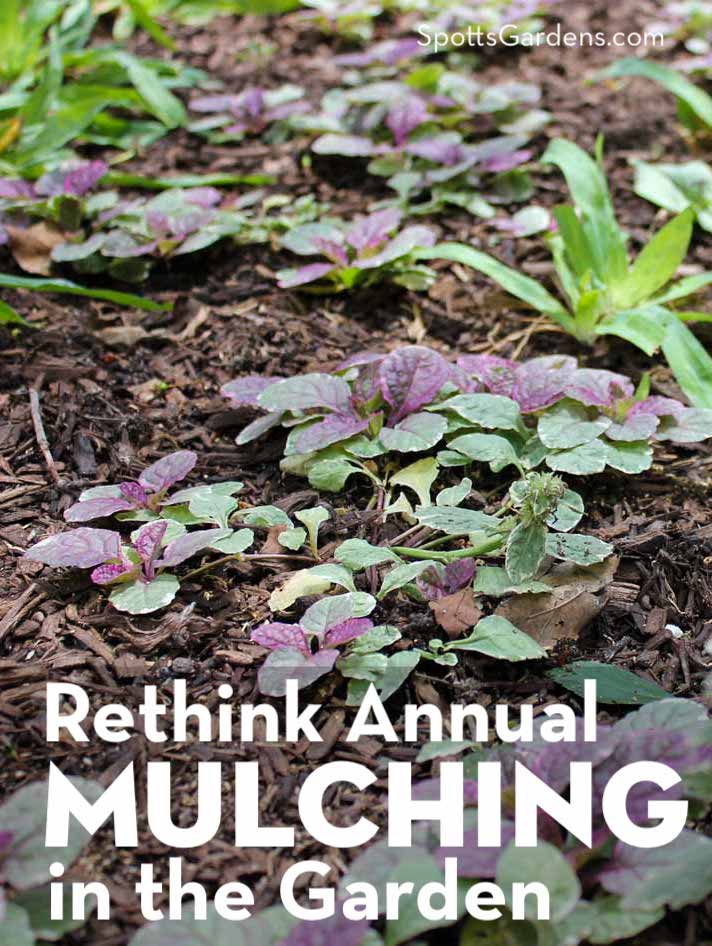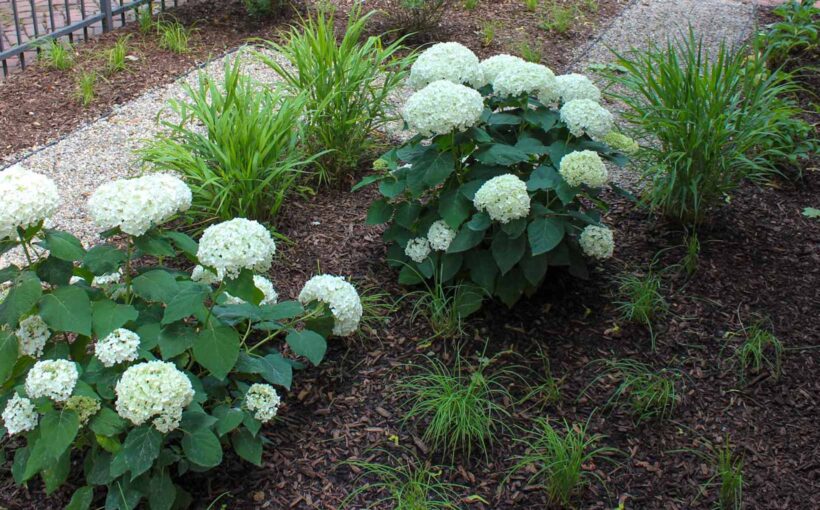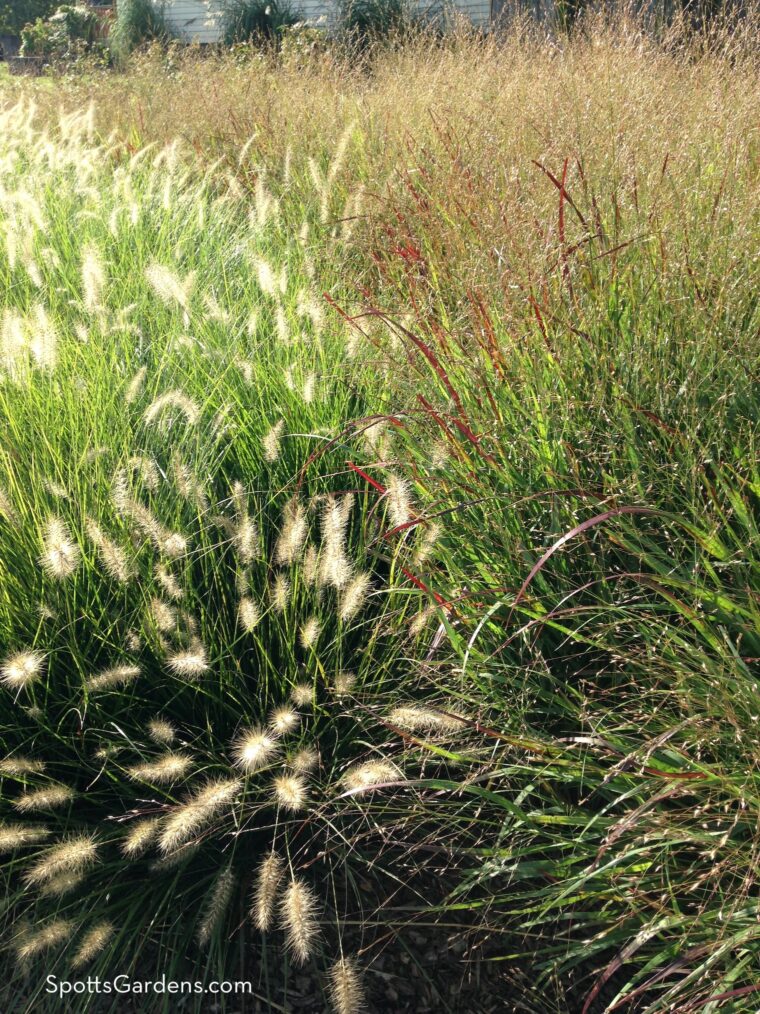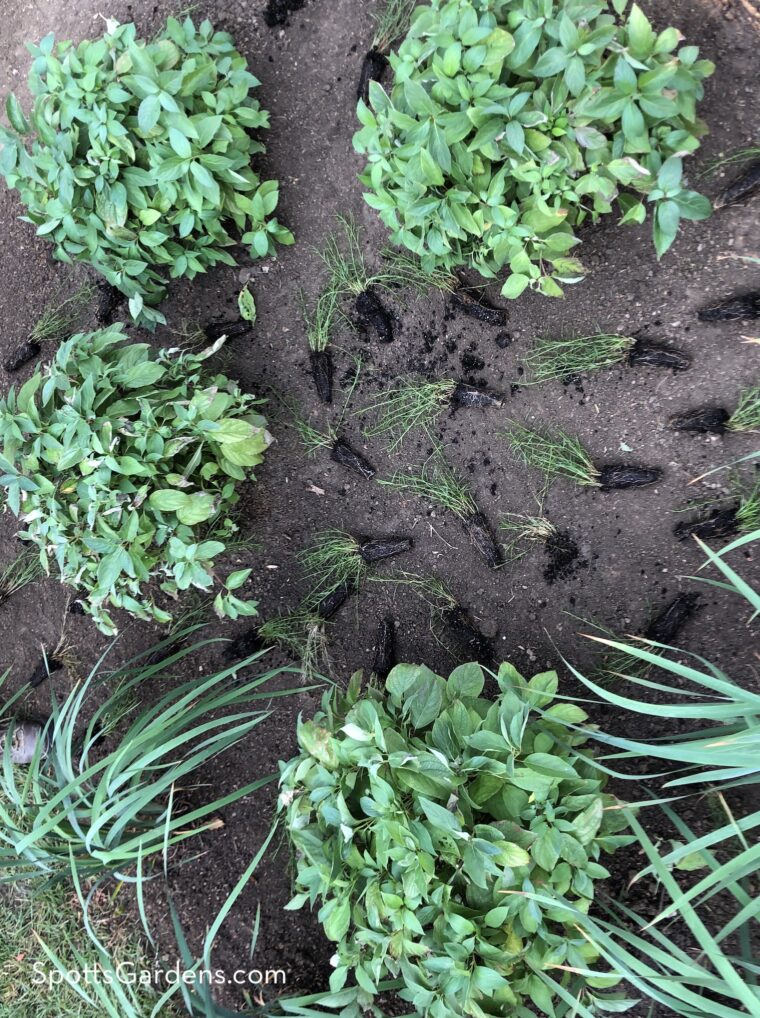Mulch can be one of our most powerful garden tools. We use it to create new beds, improve existing ones, suppress weeds, and more! But mulch shouldn’t be a permanent design feature of your garden. Rethink the way you use it. Your garden—and your wallet—will be happier.
Benefits of Mulching
Mulch is anything you place on top of the soil. It may be organic, like hardwood mulch or straw, or inorganic, like stone. We prefer to use organic mulch in the garden, which means materials that were once living.
As organic materials break down into the soil, they loosen the soil structure, improve the soil’s ability to hold moisture, and boost nutrients. Mulch also helps reduce weed pressure by covering the bare soil weeds target.
In summer, mulch acts as an insulating layer on top of the soil to help your garden retain water and stay cool. When you apply mulch to cold ground in early winter, that same insulating ability prevents the constant freeze/thaw cycle that heaves your plants out of the soil.
For more about the right way to mulch, see How to Mulch Your Garden to Prevent Weeds.

Americans Love Wood Mulch
For some reason, Americans love wood mulch. We often see gardens with plants deliberately spaced so that they don’t touch and so each plant surrounded by mulch. But this approach has some problems.
- In nature, plants grow in communities (like the two grass species planted together below), not in little islands.
- Keeping plants separated from each other ensures that you’ll get more weeds, which colonize any open spot of soil. So you have to do more weeding and more work managing the plants.
- Mulch has to be reapplied every year. It’s not only expensive and time consuming, but vast quantities of trees are cut down and ground up just to be spread over gardens.
- Adding mulch year after year eventually raises the soil level and changes the composition of the soil. While you might want that in a vegetable garden, it’s not great in an ornamental garden.
Use Plants to Suppress Weeds Instead
All the benefits of mulching—weed prevention, erosion control, temperature moderation, and maintaining moisture—can be created by planting your garden so that plants completely cover the soil. We design so that plants to do the work of mulching in the long term, and we use hardwood mulch strategically only until the plants are established.
When we design gardens, we stack plants into several layers, including a weed-smothering groundcover layer under trees and shrubs. When the plants are mature, they form communities that shade the soil completely.
For the first few years in a garden, we have open spaces between plants (like in the rain garden being planted below). In a casual design, we may sow that open space with seeds of annual plants. But in a more formal or traditional space, we use hardwood mulch to suppress weeds, conserve moisture, and prevent erosion. As plants grow in, we use less mulch each year, until the plants can take over the job.
This approach costs less in the long run, requires less work, and is more environmentally friendly than mulching the garden each year. You can read more about it in Planting in a Post-Wild World, one of our biggest design influences.
Contact Us to Plant or Mulch
If you’d like to talk about rethinking how you use mulch, or to schedule mulching in your garden, contact us today.


